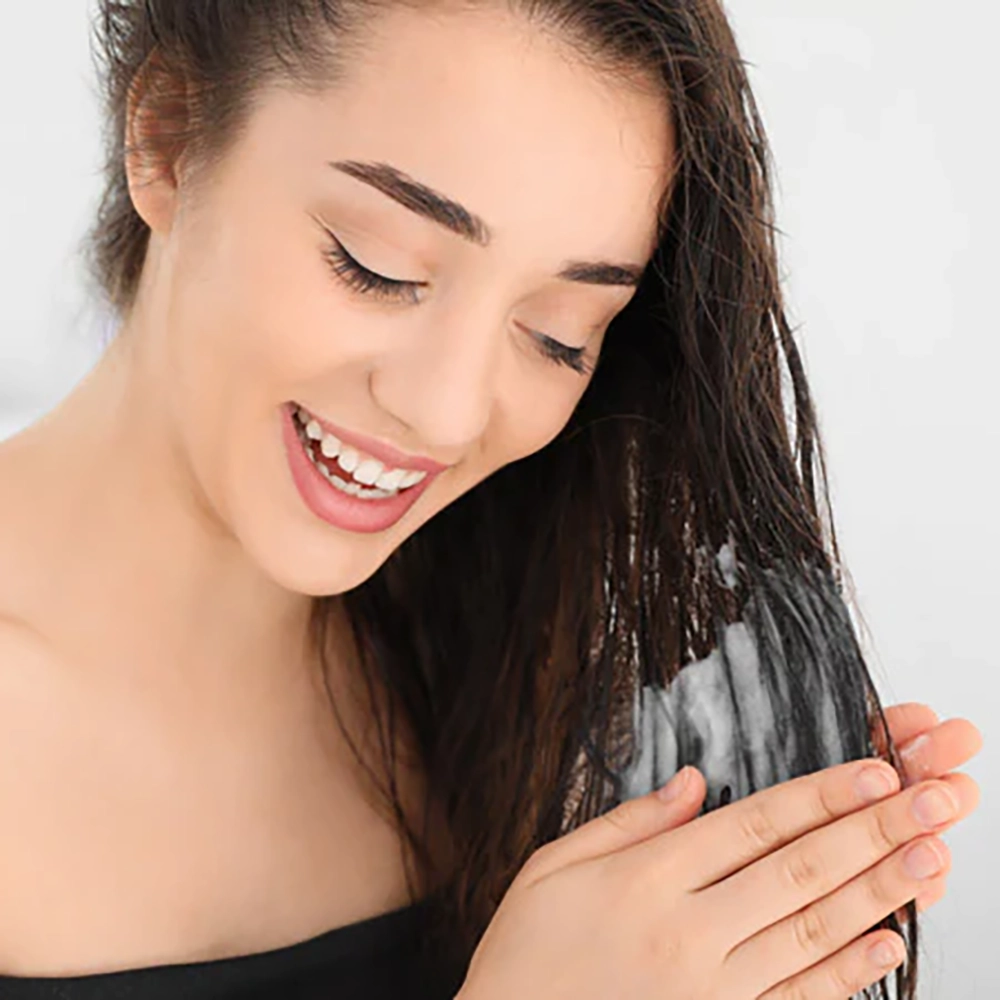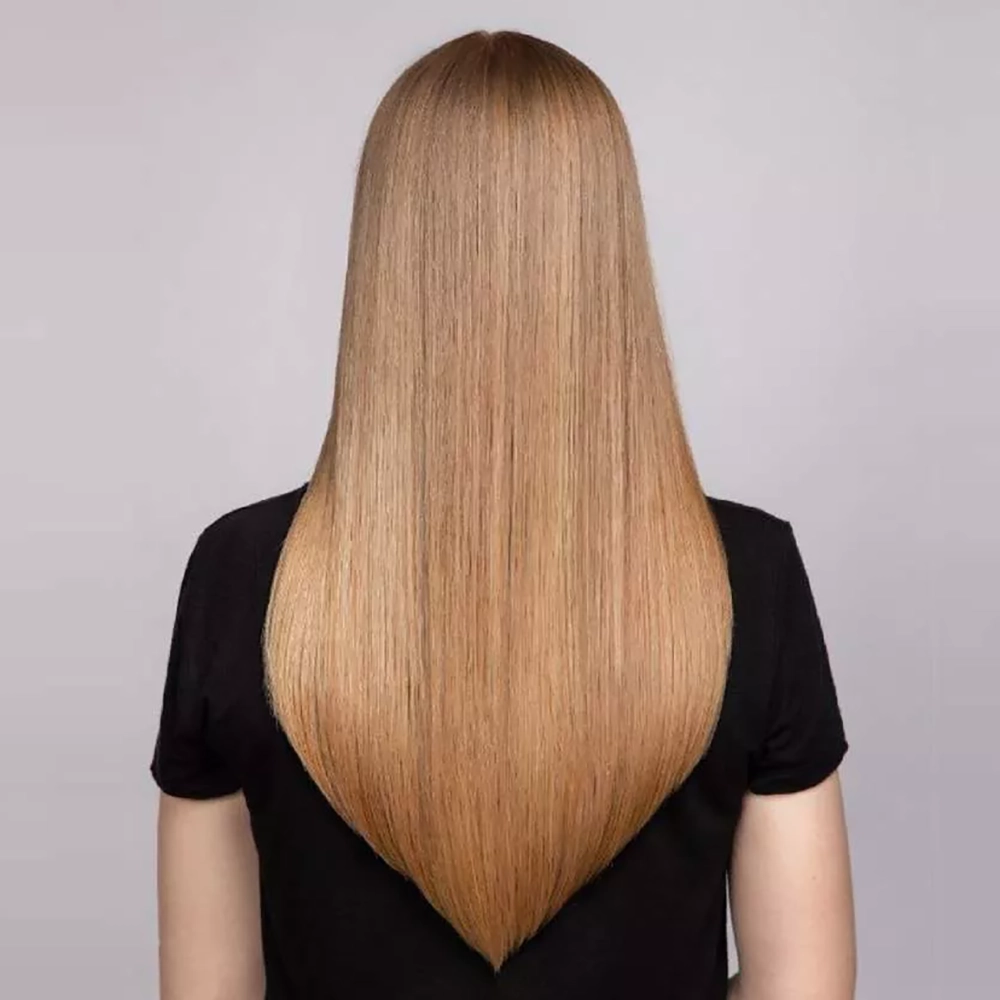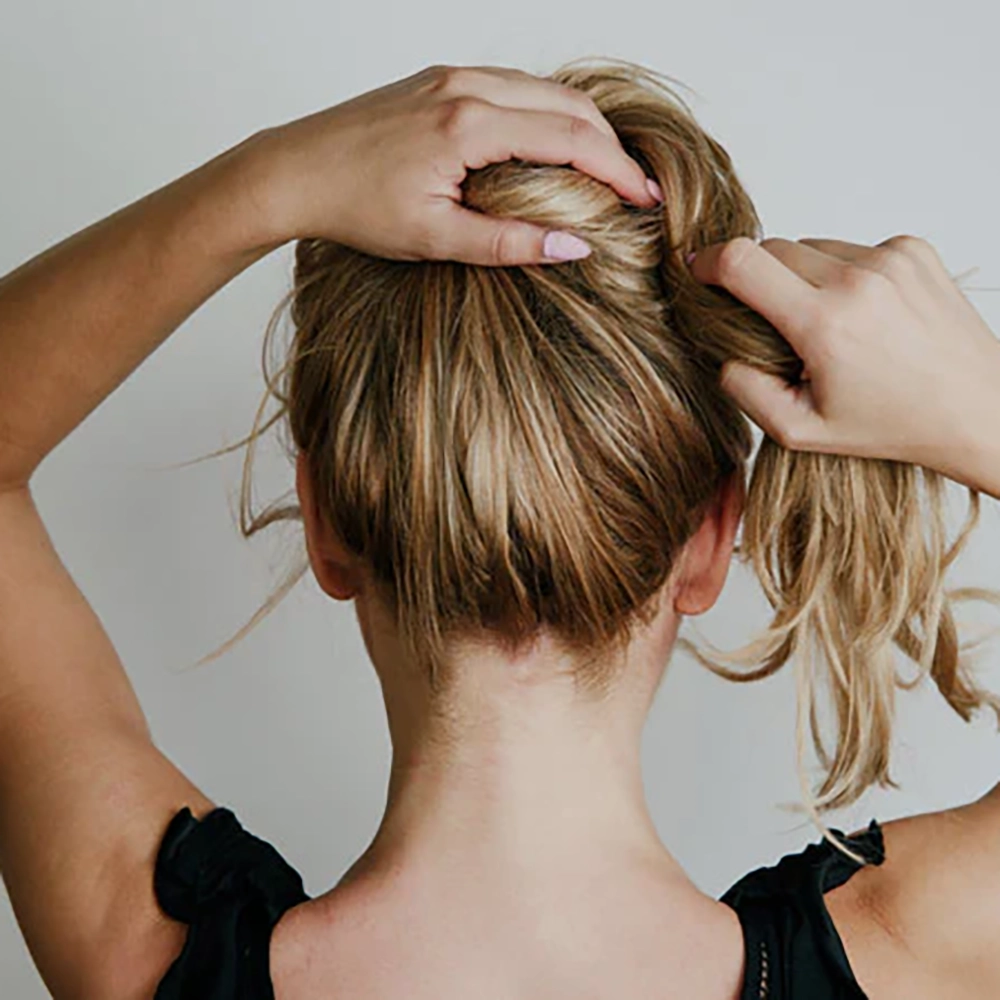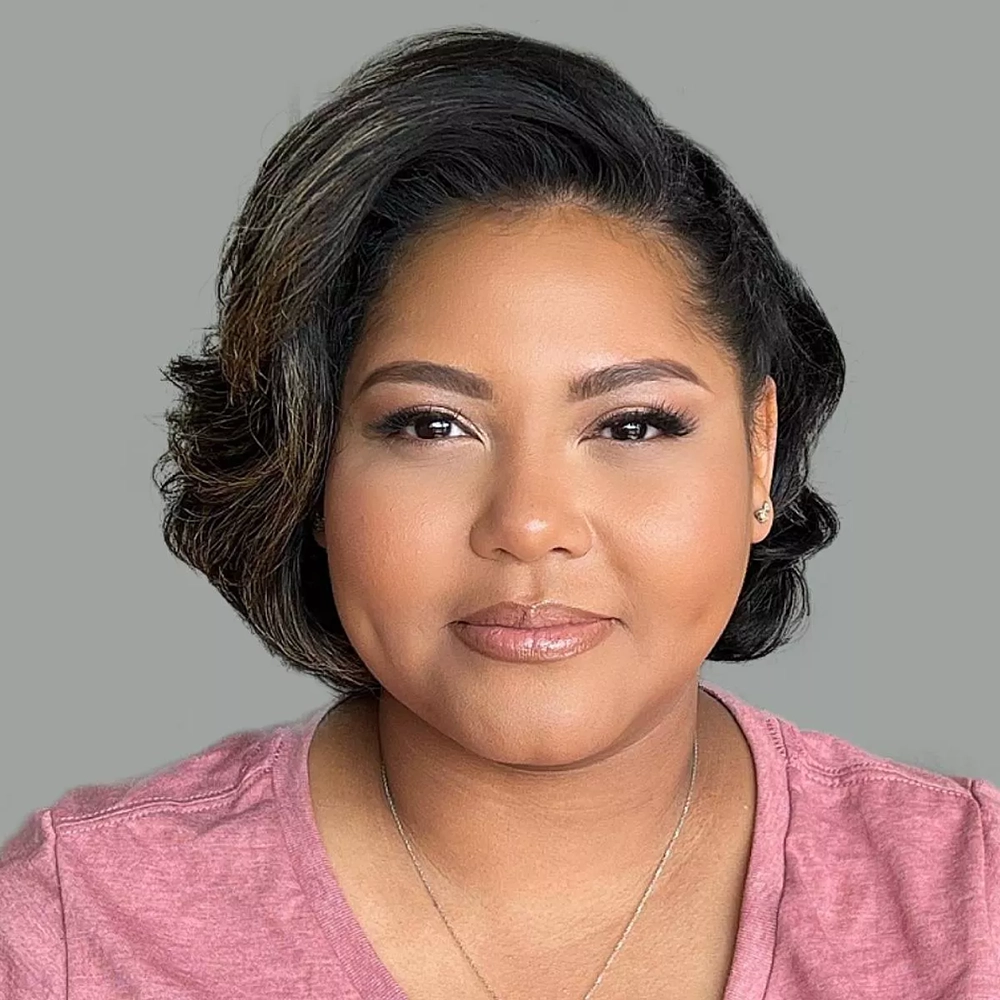Understanding the causes of tangled hair
Tangled hair can be frustrating and time-consuming to deal with. It can make grooming and styling more difficult, and can even lead to hair breakage and damage. To effectively manage tangled hair, it is important to understand the causes behind it. There are several factors that contribute to hair tangling, including:
1. Lack of moisture: Dry hair tends to tangle more easily as it lacks the necessary moisture and natural oils to keep the strands smooth and manageable. Environmental factors such as excessive heat, sun exposure, and harsh hair products can strip the hair of its moisture, resulting in tangles.
2. Overwashing: Washing your hair too frequently can strip it of its natural oils, leading to dryness and tangling. It is important to find the right balance and avoid overwashing to maintain the hair’s natural moisture levels.
3. Rough handling: Brushing or combing the hair aggressively, especially when it is wet, can cause knots and tangles. It is essential to handle the hair gently and use the right tools to prevent unnecessary tangling.
4. Hair texture and length: Certain hair textures, such as curly or coily hair, are more prone to tangling due to the natural shape of the strands. Additionally, long hair is more likely to tangle as there is more surface area for the strands to intertwine.
5. Pillow friction: When we sleep, our hair rubs against the pillowcase, causing friction that can lead to tangles. Using a satin or silk pillowcase can help reduce friction and prevent tangling during sleep.
By understanding the causes of tangled hair, you can take preventive measures to minimize tangles and keep your hair smooth and manageable. Consistency in using moisturizing hair products, finding the right detangling hairbrush, and adopting a proper hair care routine will all contribute to healthier and less tangled hair.
Choose the right hairbrush for detangling
Choosing the right hairbrush for detangling is essential for maintaining healthy and tangle-free hair. Using the wrong brush can lead to breakage, damage, and a frustrating detangling process. There are several factors to consider when selecting a hairbrush that is suitable for detangling, including the bristle type, brush design, and the condition of your hair.
One important factor to consider is the type of bristles on the brush. For detangling, it is best to opt for brushes with wide-toothed or flexible bristles. These types of bristles help to gently separate the knots and tangles in your hair without causing excessive breakage. Wide-toothed combs or brushes with nylon or boar bristles are highly recommended for detangling as they are gentle on the hair.
The design of the brush is another important aspect to consider. Brushes with a cushioned base provide better flexibility and can easily glide through tangles. The cushioned base helps to distribute pressure evenly, reducing the risk of hair breakage. Additionally, brushes with a handle that is comfortable to hold make the detangling process much easier and more efficient.
Lastly, the condition of your hair should also impact your choice of hairbrush. If you have thick, curly, or textured hair, a brush with wider-spaced bristles is ideal for detangling. This allows the brush to smoothly pass through your hair without causing unnecessary pulling or snagging. Alternatively, if you have fine or thin hair, a brush with softer bristles may be more suitable to prevent breakage.
In summary, choosing the right hairbrush for detangling is crucial for maintaining healthy hair and preventing breakage. By considering the bristle type, brush design, and the condition of your hair, you can make an informed decision on the hairbrush that will effectively detangle your hair without causing damage. Remember, detangling should always be done gently and patiently to minimize any potential harm.
Using the right hair products to prevent tangling
Tangled hair can be a real nuisance, causing frustration and even pain when trying to detangle it. One way to combat this issue is by using the right hair products. The right products can help prevent tangling and keep your hair looking smooth and manageable. In this blog post, we will explore the different types of hair products that can aid in preventing tangling and provide you with some tips on how to incorporate them into your hair care routine.
List of hair products to prevent tangling:
| Product Type | Description |
|---|---|
| Detangling Spray | A spray formula designed to soften the hair and make it easier to comb through, reducing tangles. |
| Leave-In Conditioner | Provides moisture and adds a protective barrier to the hair, minimizing friction and tangles. |
| Serum or Oil | Can be applied to the ends of the hair to add shine and reduce dryness, which can contribute to tangling. |
Using these hair products can make a significant difference in preventing tangling. Incorporating a detangling spray into your routine, for example, can help to soften your hair, making it easier to comb through without causing damage. Leave-in conditioners are also highly effective in preventing tangling as they provide a protective layer to the hair, reducing friction and snags. Additionally, using a serum or oil on the ends of your hair can help to keep them moisturized, reducing dryness and minimizing tangling.
Implementing proper hair care routine
Implementing a proper hair care routine is crucial for maintaining healthy and tangle-free hair. When it comes to preventing tangling, taking proactive measures is essential. By following a dedicated hair care routine, you can minimize the occurrence of tangles and keep your locks looking their best.
One of the first steps in an effective hair care routine is to choose the right shampoo and conditioner. Look for products specifically formulated to detangle and nourish the hair. Opt for sulfate-free options, as sulfates can strip the hair of its natural oils and contribute to tangles. Using a wide-toothed comb or a detangling brush while conditioning your hair can also help distribute the product evenly and prevent knots.
Another important aspect of a proper hair care routine is regular trimming. Split ends and dry, damaged hair are more prone to tangling. By trimming your hair every few months, you can prevent splits from traveling up the hair shaft and minimize tangles. It also helps to use a leave-in conditioner or a detangling spray after washing your hair to keep it moisturized and manageable.
- Use a wide-toothed comb or a detangling brush while conditioning
- Trim your hair every few months to prevent splits
- Apply leave-in conditioner or detangling spray after washing
| Benefits of Implementing a Proper Hair Care Routine: |
|---|
| 1. Minimizes tangles and knots |
| 2. Promotes healthier, shinier hair |
| 3. Prevents damage and split ends |
| 4. Makes hair easier to manage and style |
| 5. Enhances overall hair health |
In addition to these steps, it’s important to protect your hair while sleeping. Using a silk or satin pillowcase can help reduce friction and prevent tangles. Alternatively, you can tie your hair up in a loose bun or braid to minimize tangling. Avoid tight hairstyles and harsh hair accessories that can cause breakage and tangles.
By incorporating these tips into your daily routine, you can effectively prevent tangling and keep your hair looking its best. Remember, consistency is key when it comes to proper hair care. With a little bit of effort and the right products, you can enjoy tangle-free locks and promote overall hair health.
Techniques for detangling without causing damage
Detangling tangled hair can be a frustrating experience, especially if it leads to hair breakage and damage. However, with the right techniques, you can untangle your hair without causing further harm. It’s important to approach the detangling process with patience and care, using the right tools and products to minimize damage. In this blog post, we will explore some techniques for detangling your hair without causing damage, so you can maintain healthy and beautiful locks.
1. Start with a detangling spray or conditioner: Before you begin the detangling process, it’s essential to prep your hair with a detangling spray or conditioner. These products help to soften the hair, making it easier to comb through and reducing the risk of breakage. Apply the detangling spray or conditioner to damp hair and distribute it evenly from roots to ends.
2. Use a wide-toothed comb or a detangling brush: When it comes to detangling without causing damage, it’s crucial to choose the right tool. Opt for a wide-toothed comb or a detangling brush, as these are gentler on your hair compared to fine-toothed combs or brushes with bristles that are too close together. Start from the ends of your hair and slowly work your way up, gently removing tangles as you go.
3. Detangle in sections: Instead of tackling your entire head of hair at once, divide it into smaller sections. This will make the detangling process more manageable and minimize the risk of pulling and breaking your hair. Use hair clips or bands to secure the sections you are not working on, and focus on one section at a time, gradually working your way through each one until your entire head is detangled.
4. Be gentle and patient: It’s crucial to approach detangling with a gentle touch and plenty of patience. Avoid rushing through the process or forcefully pulling tangles, as this can lead to hair breakage and damage. Take your time and gently work through each knot, using your fingers or a comb/brush. If a particular tangle is stubborn, try applying a bit more detangling spray or conditioner and gently teasing it apart with your fingers.
Using these techniques for detangling your hair without causing damage can help you maintain healthier and stronger locks. Remember, the key is to be patient, gentle, and use the right tools and products for your hair type. By incorporating these practices into your hair care routine, you can keep your tresses tangle-free and beautiful.
Protective hairstyles to prevent tangling
Protective hairstyles can be a game-changer when it comes to preventing tangling and keeping your hair healthy. By securing your strands away from external factors that can cause damage, these hairstyles act as a shield and can significantly reduce the likelihood of knots and tangles. Whether you have curly, straight, or wavy hair, incorporating protective hairstyles into your routine can make a big difference in maintaining the health and integrity of your locks.
One of the popular protective hairstyles is the classic braids. Box braids, cornrows, or French braids are not only stylish but also keep your hair secure and tangle-free. By braiding your hair, you minimize the exposure to environmental elements that can lead to tangling. Additionally, braids distribute the tension evenly along the strands, preventing the formation of knots. Remember to moisturize and seal your hair before braiding it to ensure the strands remain hydrated and nourished throughout the protective style.
Another great option for protective hairstyles is the bun or updo. By gathering your hair and securing it in a high or low bun, you protect the ends from rubbing against clothing, pillowcases, or other surfaces that may cause friction and tangles. Buns also keep the hair in a neat and organized manner, reducing potential knots. To further enhance the hair’s protection, you can use hairpins or hair ties to hold everything securely in place. Remember to opt for snag-free hair accessories to avoid any unnecessary damage.
If you prefer a more natural look, twists or braids can be your go-to protective hairstyles. These styles involve dividing the hair into smaller sections and then twisting or braiding each section individually. This method protects the hair from rubbing against itself, reduces friction, and minimizes tangles. Twists and braids also have the advantage of being versatile, allowing you to create different looks by styling them in various ways. Don’t forget to apply a lightweight oil or leave-in conditioner to keep your twists or braids moisturized and prevent any potential dryness or breakage.
- Box braids
- Cornrows
- French braids
- Buns or updos
- Twists
In conclusion, protective hairstyles are an excellent choice for preventing tangling and maintaining the health of your hair. Whether you prefer braids, buns, or twists, these styles offer both functionality and style. By avoiding excessive manipulation and minimizing the exposure of your hair to external elements, you can keep your strands tangle-free and reduce the risk of damage. Remember to choose the hairstyle that works best for your hair type and lifestyle and always prioritize moisturizing and nourishing your hair to promote optimal hair health. With the right protective hairstyles, you can enjoy tangle-free and beautiful hair every day.
Tips for preventing tangling during sleep
Sleeping with tangled hair can be a frustrating experience. Waking up to a knotted mess can lead to damage and breakage, affecting the overall health of our hair. Fortunately, there are several tips and techniques you can incorporate into your nighttime routine to prevent tangling while you sleep.
1. Choose the right pillowcase: Opt for a satin or silk pillowcase instead of cotton. These materials create less friction, reducing the chances of your hair becoming tangled during the night.
2. Tie your hair up: Before heading to bed, loosely tie your hair up in a braid or a loose bun. This helps to keep your hair in place and prevents it from rubbing against the pillow.
3. Use a silk scarf or bonnet: If you prefer to keep your hair loose, consider wrapping it in a silk scarf or wearing a silk bonnet. This provides an extra layer of protection and prevents your hair from tangling as you toss and turn in your sleep.
4. Avoid sleeping with wet hair: Wet hair is more prone to tangling. Make sure your hair is completely dry before going to bed to minimize the risk of tangles.
5. Apply a leave-in conditioner: Before going to sleep, apply a leave-in conditioner or detangling spray to your hair. This helps to moisturize and soften your locks, making them less susceptible to tangling.
Table: Common Causes of Hair Tangling
| Causes | Solutions |
|---|---|
| Friction from pillowcases | Opt for satin or silk pillowcases |
| Tossing and turning during sleep | Tie hair up or use a silk scarf/bonnet |
| Sleeping with wet hair | Ensure hair is completely dry before bed |
| Dry and brittle hair | Apply a leave-in conditioner or detangling spray |
By following these tips, you can minimize the occurrence of hair tangling during your sleep. Remember, a little extra care before bedtime can go a long way in ensuring you wake up with manageable, tangle-free hair.


























